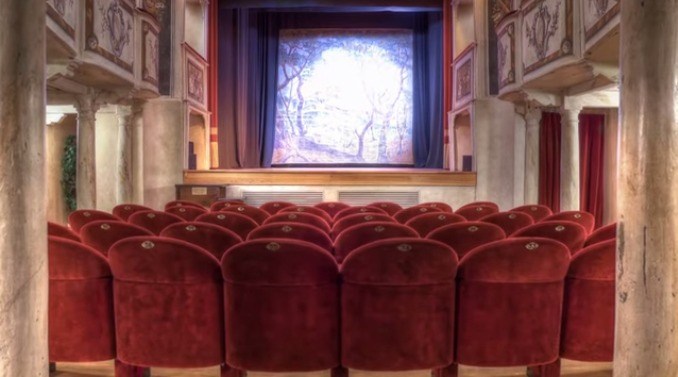During this month of February, Carnival month (28 February will be Shrove Tuesday/ Mardi Gras/Fat Tuesday/Pancake Tuesday), we want to pay our compliments to a number of our students who live in Monte Castello Vibio and in Panicale, two small Umbrian villages that share a distinctive trait: each has its own theatre, a symbol of the citizens’ need for autonomy. These places have a cultural life worth knowing and a theatre space worth visiting.
Let us begin with Teatro della Concordia in Monte Castello Vibio, near Todi, known as the smallest theatre in the world, because it is the faithful reproduction of Italian-style theatres, evidence of the Goldoni style (Goldoni was a world-renowned eighteenth-century author). At the beginning of that century during the Napoleonic occupation, nine leading families had this theatre built, inspired by the ideals of the French Revolution: liberty, equality, fraternity. Concordia is a name that immediately brings to mind the new spirit of the times. Even today, a group of people still organizes an annual theatre season, but because of the beauty and distinctiveness of its architecture, the theatre is also used for conferences, meetings and civil marriages. Guided visits are available. For information: https://www.teatropiccolo.it/
Panicale, near Lake Trasimeno and fifteen kilometres from Tuscany, is the village that houses Teatro Caporali. In 1786, twelve of the most eminent families in Panicale founded an association known as the Accademia teatrale. They had a lovely little wooden theatre constructed that, because of its position in the local landscape, became known as the Teatro del Sole (trans. Theatre of the Sun): it was meant as a declaration of independence from the clergy, the social class made up of priests who at that time ran the village. Although, by the middle of the eighteenth century, the theatre had fallen into disrepair, it was enlarged and reopened in 1858 during Carnival and renamed for Cesare Caporali, a sixteenth-century author of light poetry who was born in Panicale.
It would be interesting to know if any of our students have ever been inside these treasures of the Umbrian region: it would certainly be worthwhile to visit these parts, perhaps on a cold, sunny day, remembering the good taste of generations past.

